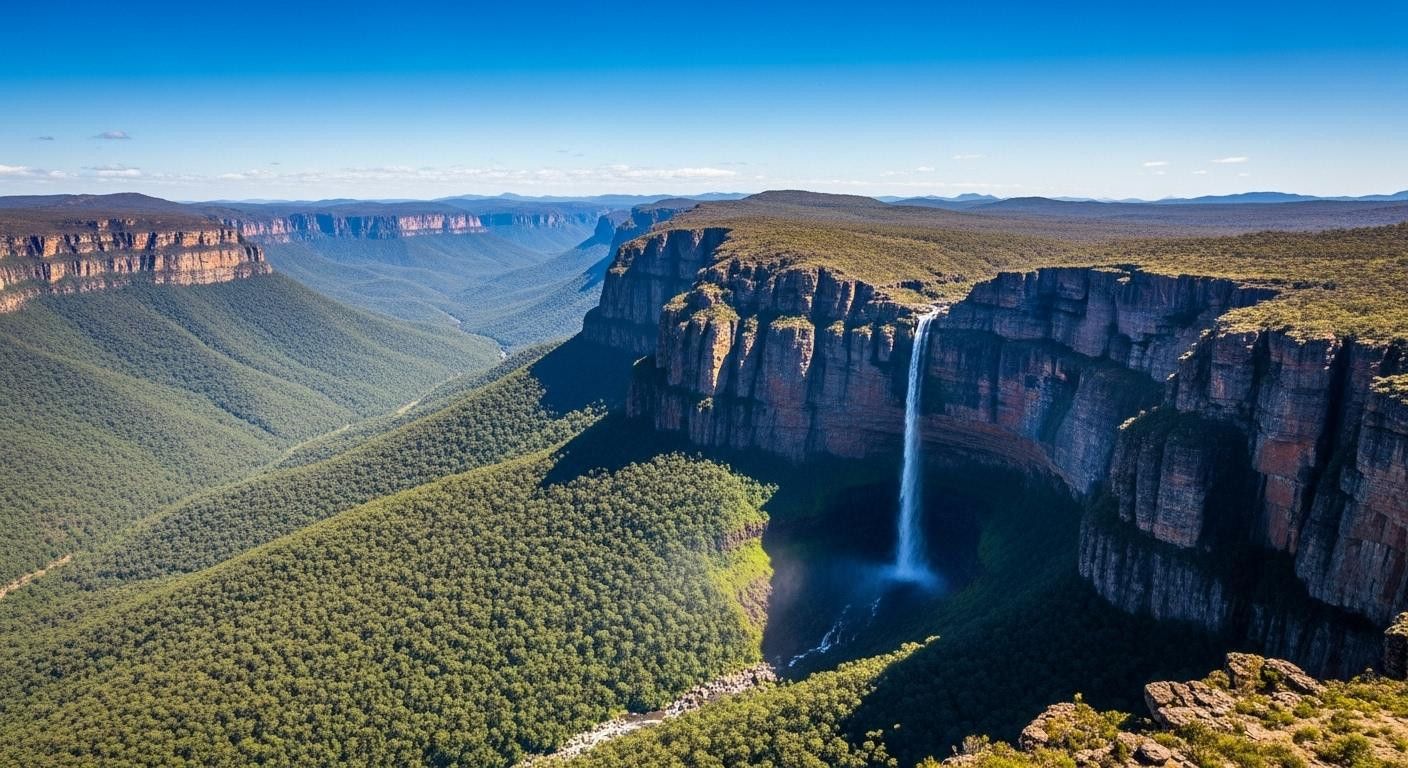Thousands of travelers book tickets to what they think is a Brazilian island paradise, only to discover they’ve signed up for something completely different. Chapada Diamantina isn’t hiding on Brazil’s coast. It’s 261 miles inland, rising 6,680 feet above sea level in Bahia’s mountainous interior.
This geographic mix-up reveals something fascinating about modern travel. We’re so programmed to expect islands when we hear “Brazil waterfalls” that we miss the country’s most spectacular mainland secret.
The great Brazilian geography confusion
The seven-hour bus ride from Salvador tells the real story. You’re not heading toward turquoise waters and palm trees. You’re climbing into the Sincorá Range, where ancient quartzite formations create table-top mountains that stretch beyond the horizon.
Local tourism boards report that 40% of international visitors arrive expecting beaches. The term “Chapada” means flat-topped plateau in Portuguese. From aerial views, these isolated mountain tops can look remarkably island-like against the surrounding valleys.
But the confusion runs deeper than terminology. Travel booking sites often categorize Chapada Diamantina alongside Fernando de Noronha and Ilha Grande. The result is predictable chaos at Lençóis, the gateway town where bewildered tourists clutch beach towels and ask directions to the nearest coast.
Why mainland mountains beat coastal islands
The numbers tell a compelling story. While Fernando de Noronha limits visitors and charges $180-250 daily, Chapada Diamantina operates on a $45-65 budget with zero visitor caps. The park covers 1,521 square miles compared to Fernando de Noronha’s mere 18.4 square miles.
Temperature advantages that islands can’t match
November temperatures hover between 64-79°F at Chapada’s elevation. Meanwhile, coastal islands swelter at 77-88°F with crushing 80-90% humidity. The mountain air stays crisp at 60-70% humidity, perfect for all-day hiking without the exhaustion that plagues beach destinations.
Waterfall superiority over any island
Here’s where geography becomes destiny. Cachoeira da Fumaça drops 1,115 feet from the plateau rim, making it Brazil’s eighth tallest waterfall. During dry season, the water literally evaporates before hitting bottom, creating the “smoke” effect that gives it its name. No coastal island can generate this kind of dramatic elevation drop.
The park contains over 30 named waterfalls, including Buracão’s 394-foot cascade and the otherworldly Poço Encantado, where midday sun creates an electric blue glow through underwater limestone windows.
The authentic experience coastal resorts can’t provide
Recent visitor surveys reveal what makes Chapada Diamantina genuinely different. Zero international hotel chains operate within park boundaries. Instead, family-run pousadas in tiny villages like Mucugê and Andaraí offer rooms for $25-40 nightly.
Adventures impossible on any island
The park’s 38 unofficial entry points create a choose-your-own-adventure landscape. Multi-day treks through Vale do Pati traverse 360-degree mountain panoramas that extend 100 miles in every direction. Underground river systems carve through caves like Gruta da Fumaca, Brazil’s largest limestone cave complex.
Local culture without tourist infrastructure
The communities here descended from 1800s diamond miners. In Lençóis, century-old mining families now guide visitors through the same valleys their ancestors worked. Local restaurants serve traditional Bahian cuisine without inflated resort pricing. Fresh fish comes from mountain streams, not imported ocean catches.
Why November 2025 offers perfect timing
This month marks the transition from dry to wet season. Waterfalls run at 70% capacity, providing dramatic flows without the tourist crowds of December-February peak season. Wildflowers begin blooming after months of drought, painting the plateaus in unexpected colors.
Accommodation availability sits at 85% compared to 30% during January peak season. Bus tickets from Salvador cost $16.35, significantly lower than peak season rates. Most importantly, the famous morning mists that shroud the mountains occur daily in November, creating photography conditions that coastal destinations simply cannot match.
Your questions about Chapada Diamantina answered
How do you actually get there without expecting beaches?
Fly into Salvador (SSA) and take the seven-hour Real Expresso bus to Lençóis for $16.35. The journey climbs steadily inland through increasingly mountainous terrain. Book accommodations in advance during November, as this shoulder season attracts serious hikers who stay longer than typical beach tourists.
What should you pack for a mountain destination instead of an island?
Hiking boots are essential for rocky trails and cave exploration. Bring layers for temperature changes between valley floors and plateau tops. Pack a headlamp for cave tours and early morning waterfall photography. Most critically, bring sturdy water bottles as mountain springs provide the purest drinking water in Brazil.
How does it compare to actual Brazilian islands for adventure?
Chapada offers experiences impossible on Fernando de Noronha or Ilha Grande. Table mountain hiking, underground river swimming, and 1,000-foot waterfall rappelling don’t exist on coastal islands. The trade-off is obvious: no surfing, no beach culture, no ocean access. But you gain geological diversity that islands simply cannot provide at 65-75% lower costs.
Dawn breaks over the Sincorá Range as mist rises from hidden valleys below. This isn’t the Brazil most travelers expect to find. It’s better.
